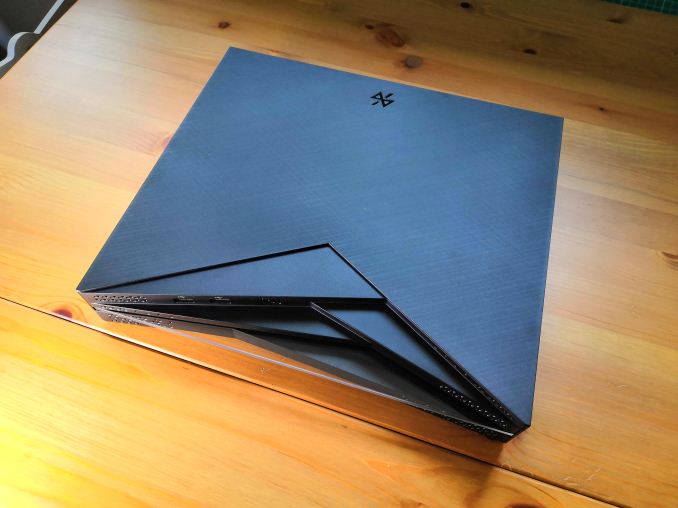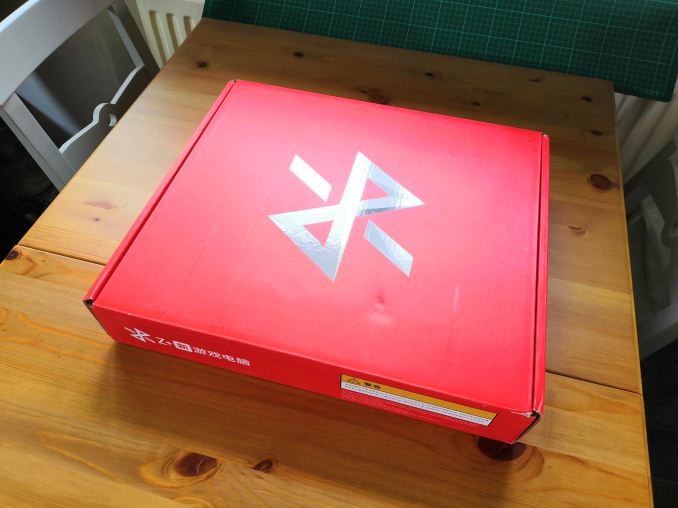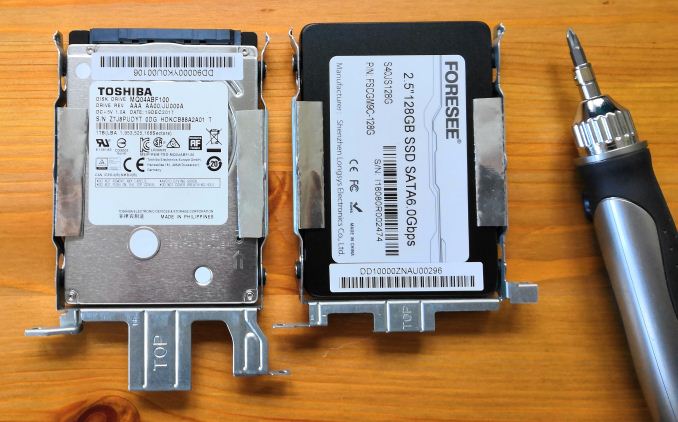A Quick Look at the Subor Z+ Console/PC Hybrid: A Custom AMD SoC Called FireFlight
by Ian Cutress on September 19, 2018 5:45 PM EST
One of the most interesting things in August (there were a lot) was that a company in China invested the best part of 400 million RMB / $60 million USD in a custom processor for its upcoming console and PC hybrid system. This processor comes from AMD’s Semi-Custom Division, and uses four Zen cores paired with 24 Vega compute units, making a beefy APU for a console system and a sizeable performer as a PC. One of the unique parts about the chip is that it uses GDDR5 for both CPU and GPU, which will be critical to its performance.
We have covered the initial launch of PlayRuyi’s Subor Z+ console in two articles, slowly going into more details as and when we get them:
- AMD Creates Quad Core Zen SoC with 24 Vega CUs for Chinese Consoles
- More Details About the ZhongShan Subor Z+ Console, with Custom AMD Ryzen SoC
On the back of those pieces, the product manager for the Subor Z+ got in touch with me via email. We have sent some questions back and forth, but the crux of the communication is that they have sent us a Z+ for review.
This is going to be fun. They’ve told as a lot. I mean, more than I ever expected. I'll save the juicy details for the full review.
The Z+ only arrived yesterday, so it's being tested for the full review. For now though, I wanted to publish something to whet the appetite. Be forewarned, I’m really bad at making videos like this. But here’s 25 minutes of starting the system up for the first time, and some benchmarks.
The codename for the SoC is ‘FireFlight’, which translates as Fenghuang. If some readers who were following the leaks on popular benchmarking websites were wondering, that’s the connection. It also explains why the graphics are labelled as ‘15FF’ – where FF stands for FireFlight.
On the hardware side, the console is listed as having:
- Four Ryzen Cores at 3.0 GHz, with Simultaneous Multi Threading
- 24 CUs of Radeon Vega, at 1.3 GHz, for 4 TFLOPs compute
- 8GB of GDDR5 at 256 GB/s
- OS Option 1 (PC Mode): Windows 10
- OS Option 2 (Console Mode): Windows 10 with Z+ Custom Interface
- Low Power Modes supported, with 30W 'background download' power
- 4.9 liter body, built-power supply, 'excellent' heat dissipation design
- 'Ultra-Mute' 33 dB at full horsepower
- Customizable appearance for unique designs
- 802.11ac WiFi, BlueTooth 4.1 (WiFi Module unknown)
- Storage is supplied through a 128GB M.2 SSD and optional 1TB HDD
- Audio stack supports SPDIF
- HDMI 2.0 is supported, as well as VR, 4K60, and HDCP 1.4
- System has four USB 3.0 ports and two USB 2.0 ports
We’ll aim for a full review in a couple of weeks, with our new GPU benchmark suite, as well as tests on the GDDR5. For now I need to work out what a good GPU comparison point might be. Kaby G? But that has HBM... Suggestions and thoughts are very welcome.














40 Comments
View All Comments
peterfares - Wednesday, September 19, 2018 - link
8GB combined memory is a little bit constrained. 12GB or 16GB would have given it much more room to breathe.peterfares - Wednesday, September 19, 2018 - link
I am actually interested in learning how windows deals with this unified memory. Does it work unified, or is it partitioned in two? Will software copy assets from the "system" memory partition to the "VRAM" partition?Alexvrb - Wednesday, September 19, 2018 - link
Same as any other APU that utilizes shared memory... like pretty much any Intel chip that doesn't have a chunk of HBM nearby, or the vast majority of AMD APUs.looncraz - Thursday, January 17, 2019 - link
It is partitioned.2GB system, 4GB Windows, 2GB Video.
EliteRetard - Thursday, September 20, 2018 - link
On that note, is there any way they can change the current allocation? Or perhaps even allow us to choose the allocation of memory (does it have a BIOS)? I'm thinking 3GB for the GPU and 5GB for the CPU would be more balanced....I figure that would still leave near 4GB "RAM" free for applications.It would be interesting to see them offer a higher tier version if possible, with more GDDR5 (4GB GPU / 8GB CPU should be fine) and perhaps a single large SSD (at least 512GB, leaving the HDD slot empty for users). Could that be done for an extra $100? I'm thinking no HDD nearly offsets the SSD upgrade and 4GB more GDDR5 around $40 (based on RAM prices).
Having a dual boot console is a very interesting idea to me, all the benefits of a simple optimized gaming platform along with all the benefits of a full windows PC.
MrSpadge - Wednesday, September 19, 2018 - link
Definitely test against Kaby-G and Raven Ridge.Alexvrb - Wednesday, September 19, 2018 - link
Grab a RR 2400G, but don't bother testing Raven Ridge's integrated graphics. The 2400G (no dual CCX) could be paired with an RX 570.And yeah definitely throw Kaby-G in there... top model KBL-G has the same number of CUs. The HBM it uses actually has lower bandwidth, but it's not shared with the CPU like the GDDR in this custom chip (unless I'm missing something), so should be interesting. Fireflight has slightly higher clocks but i7-8809G has an unlocked GPU too I think.
MrSpadge - Thursday, September 20, 2018 - link
Comparing the CPU performance to RR could be interesting: massively more bandwidth but maybe higher latency for the GDDR5. It's got shorter traces, so maybe the latency is even better. But GPUs can hide latency so well, I doubt it's high on their optimization priority list.Alexvrb - Friday, September 21, 2018 - link
Yes, the latency won't affect the GPU negatively, which is another reason not to bother pitting it against the 11CU iGPU. However, on the CPU side yes that is one of the considerations. I'd be interested to see a downclocked 2400G (3.0Ghz) in CPU tests against FF.stanleyipkiss - Wednesday, September 19, 2018 - link
Eurogamer had one on test (DigitalFoundry I guess) before Ian.